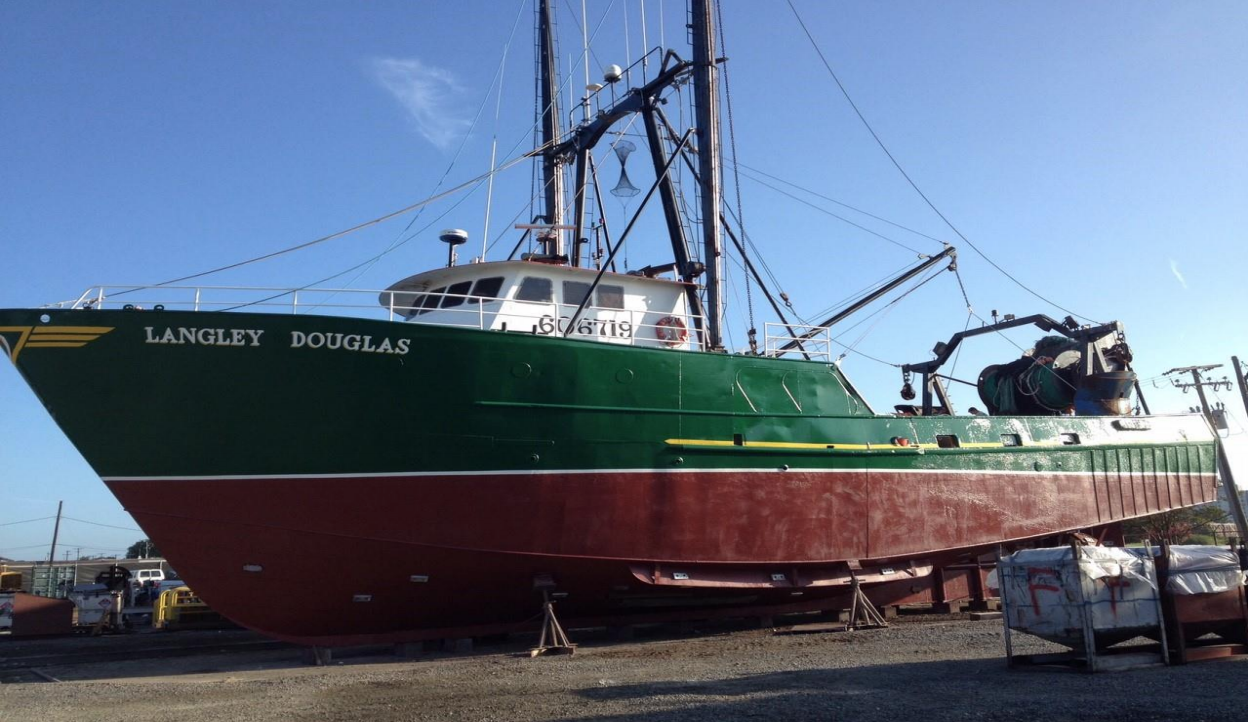The afternoon of Sept. 10, 2017, was not a particularly noteworthy day for the crew of the Langley Douglas. The 79-foot steel trawler left Amory’s Seafood Market pier in Hampton, Va., and headed into the Atlantic for a four-day squid-fishing trip.
Shortly before noon the next morning, along the edge of the continental shelf and just north of Norfolk Canyon, the four-man crew and one NOAA observer were in the water trying to get into their immersion suits and life raft while the Langley Douglas was sinking by its stern.

The Langley Douglas’ main deck during a previous voyage, with about 18,000–20,000 pounds of squid in the hog pen. Crew photo.
The culprit? According to the National Transportation Safety Board accident report, it was the decision to unload a large catch of squid from the cod end into the centerline hog pen. However, the squid quickly overflowed the portside of the pen, and the Langley Douglas immediately developed a port list. That was followed by seas coming over the port quarter, which were heeling the vessel further to port with each passing wave. Now the Langley Douglas was listing as much as 20 degrees.
Then there was the shark — a 10,000-pound basking that came up in the cod end, and added its weight to the estimated 25,000 pounds of squid that had been netted with it. The increased list caused the shark to settle against the hog pen’s portside, while about 2,500 pounds of squid slid against the stern’s after-portside bulwark, blocking the freeing ports and preventing water on deck from escaping. Eventually the shark rolled out of the pen and slid to the portside bulwark.
After the captain failed in an attempt to counter the list, the crew was instructed to get into their immersion suits, but the heavy seas and increasing list made donning the suits too difficult, so the crew went into the water holding the suits. Eventually, the first mate and the deckhand made it into the life raft. The captain, senior deckhand and NOAA observer held onto a floating cooler about 30 yards from the life raft. The Langley Douglas’ bow remained in sight for a short time and then disappeared. (The Langley Douglas, which was built at Quality Marine in Bayou La Batre, Ala., in 1979 was originally the Angela Joy and then the Vaud J.)
At 11:17 a.m. the Langley Douglas’ EPIRB alerted NOAA and the Coast Guard rescue center in Plymouth, Va. By 12:46 p.m. all five people had been hoisted into a Coast Guard helicopter.
Summing up its report, the National Transportation Safety Board said the probable cause of the sinking of the Langley Douglas “was the captain’s decision to unload a large catch that overflowed the pen and spilled out on deck.” That along with trapped water on the deck and shifting liquids in partially filled tanks below deck caused the Langley Douglas to “roll to port and downflood."







